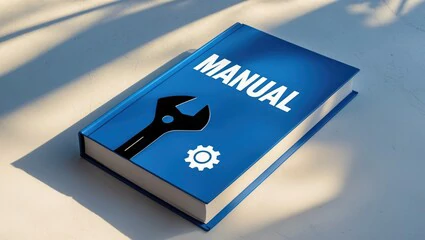Motorcycle Lithium Battery Charging Protection Failure
main content
Motorcycle lithium battery charging protection failure occurs when built-in safeguards like the Battery Management System (BMS) malfunction, exposing the battery to risks like overcharging, overheating, or deep discharging. These failures can stem from outdated firmware, voltage irregularities, extreme temperatures, or physical damage to the BMS. Addressing these issues promptly is critical to prevent irreversible battery damage and ensure safe operation.
Common Causes and Solutions
1.Faulty or Outdated BMS Firmware
The BMS monitors voltage, temperature, and cell balance to prevent charging errors. If its firmware is outdated or corrupted, it may fail to trigger protection mechanisms. For instance, a BMS stuck in "bootloader mode" after a failed update can disable charging entirely. To resolve this, reset the BMS by disconnecting the battery for 10 minutes, then update the firmware using manufacturer-approved tools. Avoid interruptions during updates, and ensure Bluetooth connectivity is stable if using mobile apps.
2.Voltage Mismatch or Overcharging
Chargers incompatible with lithium batteries often exceed the safe voltage threshold (14.7V for LiFePO4), forcing the BMS to shut down. Similarly, alternators designed for lead-acid batteries may overstress lithium cells. Use a multimeter to check charging voltage. If readings exceed 14.7V, replace the charger or install a lithium-compatible voltage regulator. For overcharged batteries, discharge them slowly at 0.1C to reset the BMS and avoid dendrite formation.
3.Temperature-Related Protection Triggers
Extreme heat or cold can activate the BMS’s temperature protection, halting charging. Below 0°C (32°F), lithium batteries risk plating during charging, while temperatures above 45°C (113°F) accelerate cell degradation. Store batteries in moderate environments (10–30°C) before charging. For cold climates, opt for batteries with built-in heating elements or warm them to room temperature gradually.
4.Physical Damage to BMS Components
Corroded connectors, loose wiring, or water ingress can disrupt BMS communication with the battery. Inspect terminals for corrosion and clean them with a baking soda solution. Replace frayed cables and apply dielectric grease to prevent moisture damage. If the BMS itself is damaged, consult the manufacturer for a replacement to avoid voiding warranties.
5.Deep Discharge and Cell Imbalance
Prolonged discharge below 10V per cell can "lock" the BMS into protection mode. To revive deeply discharged batteries, use a lithium-specific charger with a recovery mode. Cell imbalance—often caused by aging or inconsistent charging—requires a BMS recalibration. Manually balance cells by charging at low currents (1A) or replace severely degraded cells to restore uniformity.
Preventive Measures
Update BMS firmware annually to patch vulnerabilities and improve compatibility.
Use smart chargers with LiFePO4 profiles to avoid voltage spikes and enable automatic temperature compensation.
Install thermal insulation or cooling systems in extreme climates to stabilize battery temperature.
Perform monthly voltage checks to detect early signs of cell imbalance or BMS malfunctions.
Conclusion
Charging protection failures demand immediate attention to prevent safety hazards like thermal runaway or fire. Always prioritize manufacturer guidelines for troubleshooting, and avoid DIY repairs on BMS components unless certified. For persistent issues, consult a certified technician to assess electrical system compatibility and ensure long-term battery reliability.

START-STOP LITHIUM battery
Enov start-stop battery is designed to provide excellent performance for high-demand start-stop vaehicles. It adopts the third-generation intelligent lithium platform architecture to achieve technological breakthroughs in core indicators such as cycle life, environmental adaptability and energy density. Compared with the traditional lead-acid battery system, the energy efficiency is increased by 210%, the cycle life is extended by 8-10 times, and the monthly self-discharge rate is controlled within 3%. Enov's unique low-temperature battery technology makes a breakthrough in achieving stable output in the whole climate domain from -30℃ to 65℃, maintaining more than 90% of the effective capacity release under extremely cold conditions (-30℃), and maintaining 90% of the capacity in high temperature environments (65℃).
The start-stop battery series products cover the mainstream voltage platform of 12V/24V/48V, and support flexible configuration of LFP (lithium iron phosphate) and NCM (lithium nickel cobalt manganese oxide) dual-material system. All models adopt modular design to support customization of different model specifications. Enuo engineering and technical team to provide full cycle technical service support, if you need, please contact us.
Other products
UAV BATTERY
LITHIUM ENERGY STORAGE BATTERY
QUICK INQUIRY
FAQ
Access to high frequency technical questions with one click, get accurate answers on product application, after-sales policy and customization process.
Service and Support
Get the latest product specifications, explore professional OEM/ODM customization services, click to open exclusive technical support and production solutions.
Become a Partner
We sincerely invite resources to interconnect, work together for win-win development, and immediately open a new chapter of strategic cooperation!


